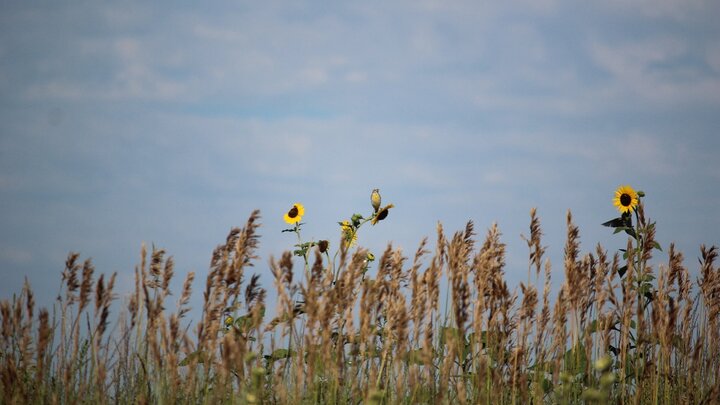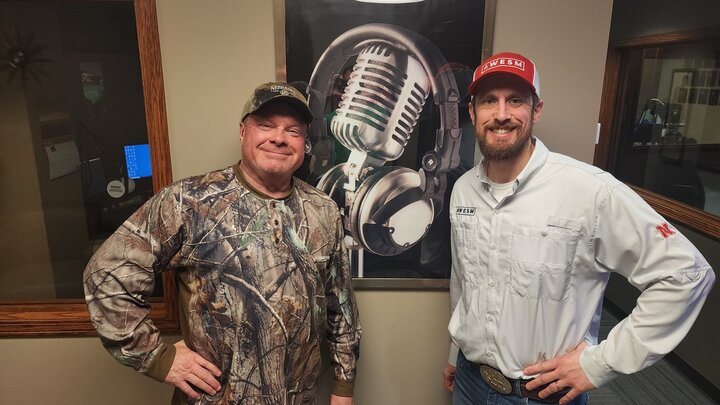To many, the idea of trudging through cold, wet grass in the early morning hours to count birds might seem dull or even unpleasant. But I’m here to convince you otherwise. Since the early 1990s, ecologists have relied on point count surveys as a fundamental method for monitoring bird populations in different habitats. These surveys involve standing in a fixed location for a set period, typically around 10 minutes, and recording every bird seen or heard. Once the time is up, the observer moves to a new location and repeats the process until mid-morning. Over the course of my career, I’ve conducted hundreds of these surveys across Nebraska, and I can say with confidence that the early morning chorus of grassland birds is nothing short of a theatrical masterpiece, a performance that rivals anything that the nearest theater has to offer.
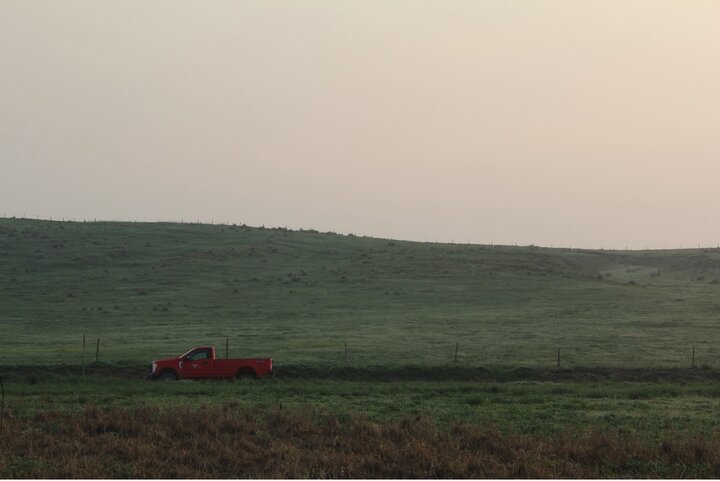
The first act begins around 6 a.m. when I arrive at my first survey location of the day. I’d be lying if I said that leaving the warmth of the field truck and walking away from my hot, freshly brewed coffee into the cold, misty mourning is easy, but I remind myself that the birds will not appreciate a lack of audience. Even something as simple as opening the truck door becomes a delicate task as the creak of hinges or slam of the door can easily scare off nearby birds. I take a few careful moments to ease the door open and close it softly behind me, then begin my quiet walk into the grassland.
Most of the grasslands where I conducted my surveys are enrolled in the Conservation Reserve Program (CRP), which conserves grasslands for wildlife habitat. With GPS in hand, I follow the designated route to my survey point and along the path I come across many different magnificent sights. A Prairie Rattlesnake curled into itself watching me with the same caution that I give it. Yucca plants anxiously wait for an adult yucca moth to pollinate it. Or finally, a more delicate and rarer find, a Dickcissel nest constructed in the fine strands of little bluestem. Once I reach the spot, I start a five-minute waiting period. This gives the birds a chance to return and resume their normal behavior if my arrival disturbed them. It’s also a window to collect important environmental data such as wind speed, cloud cover, start time and survey date, all crucial for later analysis. As I take my notes, the low fog clinging to the grass begins to lift, and I begin the 10-minute timer.

As soon as the birds are comfortable with my presence as an attendant to their show, the chorus begins to swell. Red-winged blackbirds begin the overture and Dickcissels follow closely behind with their buzzy “dick-dick-see-see-see”. If you pay close attention, the actors give you a moment to catch a glimpse of them as they take their station on top of a sunflower. Although mourning doves often play a supporting role in the morning chorus, their "coo-ah, coo-coo-coo" provides a soft, nostalgic backdrop to more vocal species. However, the show truly begins when the lead actor, the Western Meadowlark, raises its song above the rest, its song passing across the landscape. I quickly jot down each bird species I hear or see, noting the time of the observation and approximately how far they are from me. My sloppy handwriting is a testament to my attention being drawn away as other species join in the ensemble. An American Goldfinch is one such species that I usually see before I hear them, the males with their bright yellow costume bounce low across the grasses. A band of sparrow species−Baird’s, Henslow, and the aptly named Grasshopper Sparrow−add to the thunderous troupe with their delicate songs. The Ring-necked Pheasant makes its dramatic entrance with its raspy, foreign-sounding crow, quickly followed by a sudden flush from the edge of the field. This menagerie of species all singing at once evokes the sense that the listener is witnessing something that should be a part of everyday life.
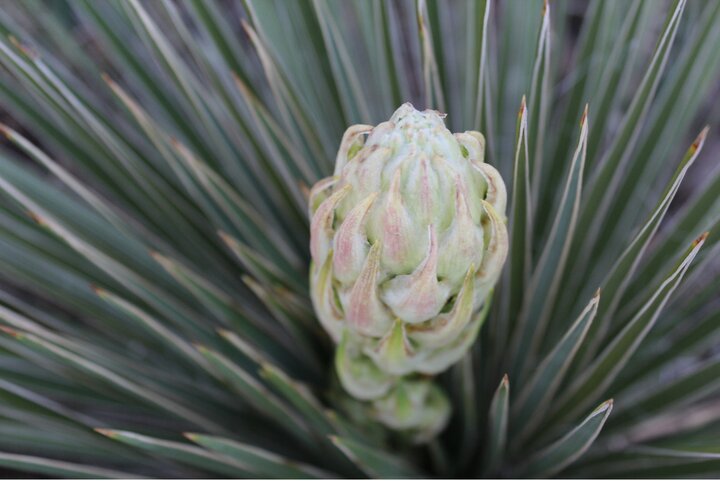
Once the natural symphony reaches its peak, I glance at my timer and notice the ten minutes are up. I turn to begin the walk back to the truck with my feet and bottom of my pants soaked in early morning dew. Back at the truck, I find my coffee has gone cold, however, I no longer need it. The early morning performance, encased in the cool air and pinkish light, has awoken me. I drive to the next survey location.
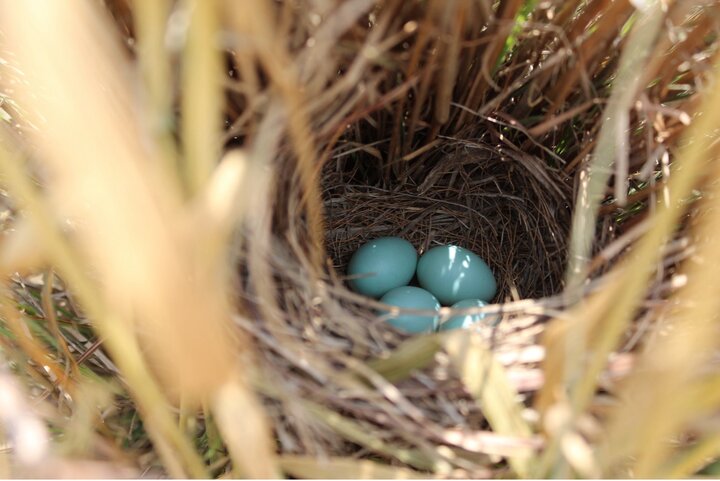
Sadly, this exhibition of grassland birdlife may soon draw its final curtain, as these species continue to decline at alarming rates. Supporting conservation efforts and contributing to organizations that restore native habitats and prevent large-scale conversion of grasslands to row crops in human-dominated landscapes is a powerful way to protect these vulnerable species. Conserving and expanding our nation’s grasslands is essential to reversing population declines before the grasslands fall silent.
